Originally published June 2009
With the movie [now in wide release], I’m re-reading and re-loving Shirato Sanpei‘s second run of Kamui manga. The godfather of ninja comics debuted the character in 1964, then re-imagined the property as a more grown up and severe manga in the 80’s. Kamui Gaiden was a critical and financial hit, crossed-over into anime, and inspired [the live action film.] Eclipse Comics made history when they published a 37 issue run in the U.S. as The Legend of Kamui: A Genuine Ninja Story – the first such importation of a Japanese title to our shores.
Here are some terrific combat panels from that run. Sanpei really had a knack for movement, and loved these leaping and tumbling attacks. Despite the amount of dynamic action, you can still ‘read’ what is happening, clearly see the techniques at work and how the killing blows are delivered. Aspiring artists have plenty to learn here:
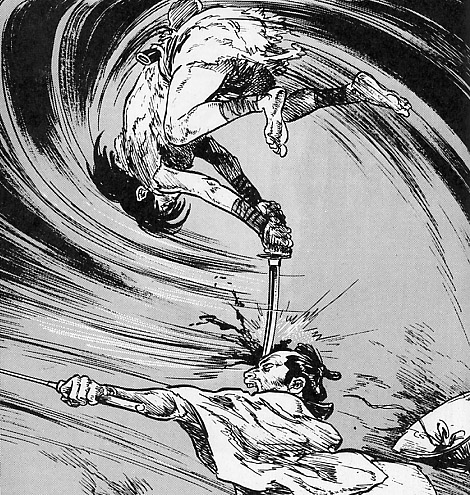
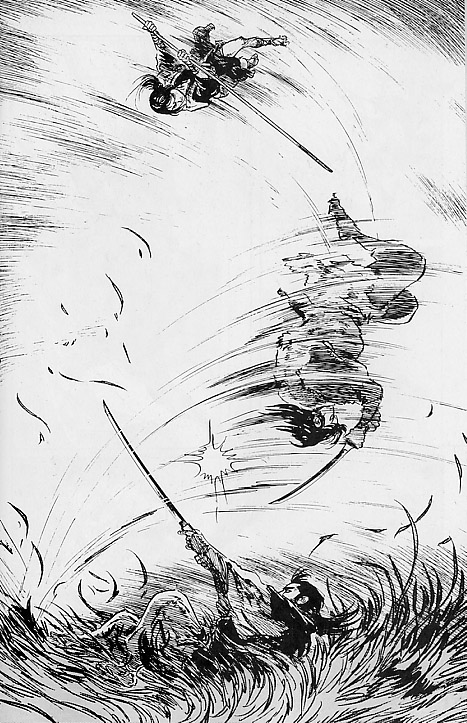
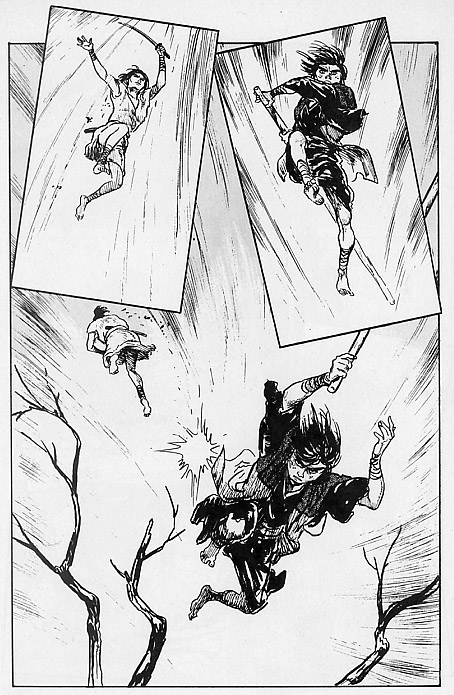
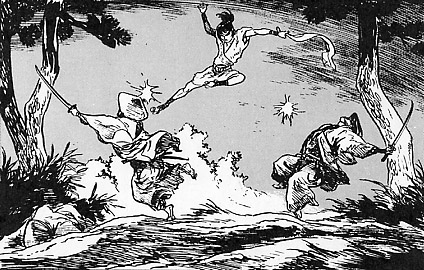
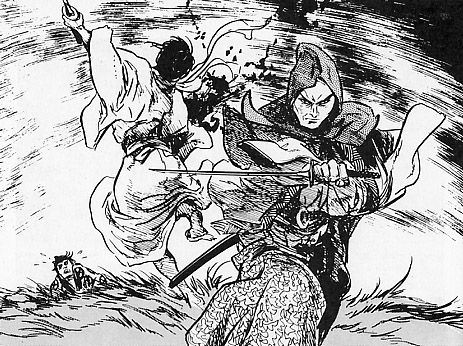
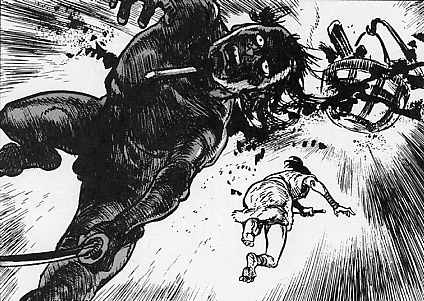
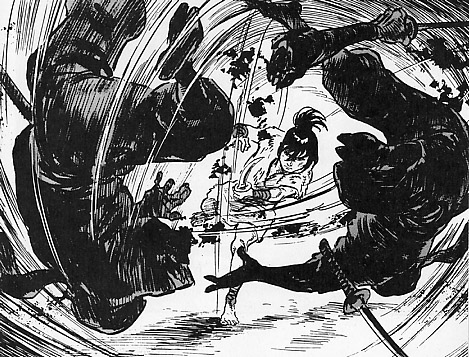
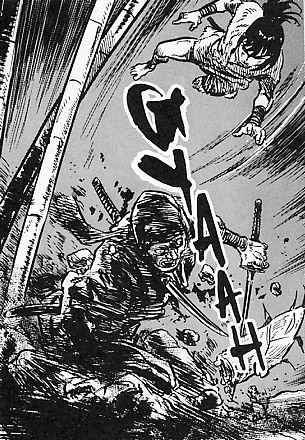
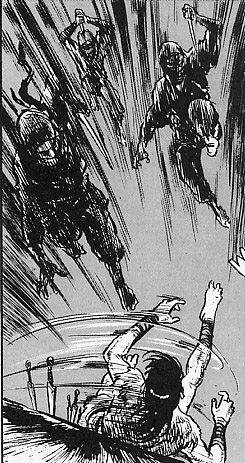
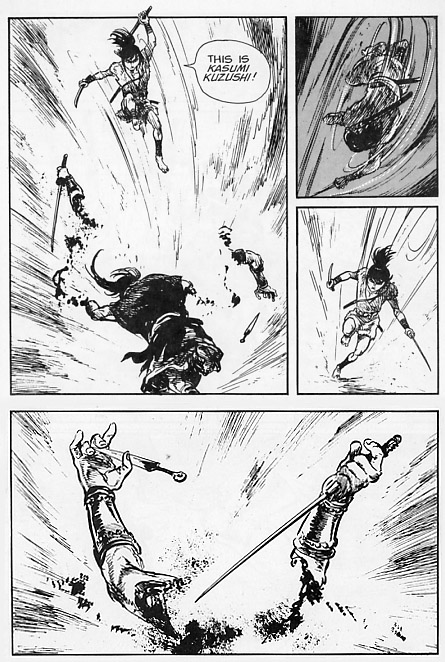
The grocery list of things I love about this series is long indeed. Kamui is the archetypal skilled loner on the run, trying to leave behind his warrior life but needing those resented skills to survive constant pursuit. It’s a great structure, and over it Sanpei laid some emotionally challenging stories. You could never get too attached to a character, never too comfortable with a setting.
I also love characters with limited arsenals used in increasingly innovative ways. Kamui’s signature short sword and reverse grip technique dispatched 90% of his enemies. A few kunai or shuriken here or there, sometimes a grapple line, were pretty much it.
Eclipse released 37 issues total, starting in 1987. It was late in the ninja craze here, and rarely did the signature black suit appear on covers, so the title may have failed to find the audience it deserved. These gems can be found cheap on eBay, even in complete runs.
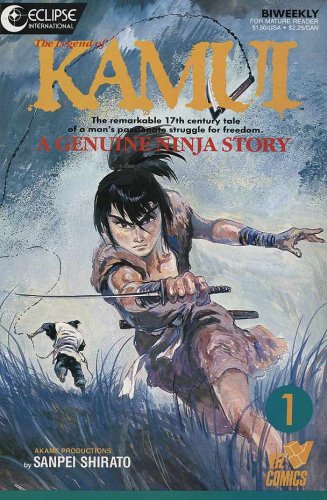
The first translated story arc, an incredible parable of struggling fishermen and the inescapability of one’s destined trade, was later collected into two trade paperbacks by VIZ, with reduced art. I prefer the original [stand-alone issues], which often had liner notes on the historical subject matter or the artist’s craft.
